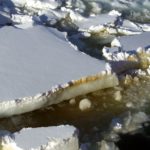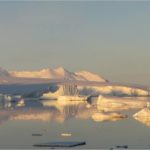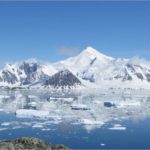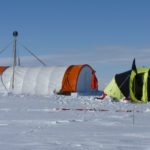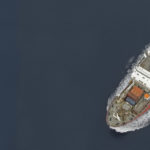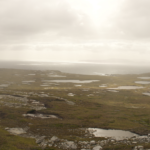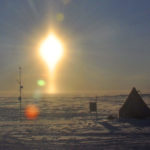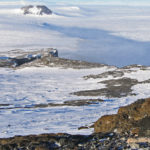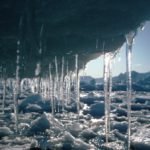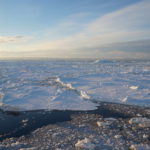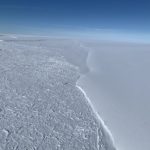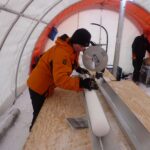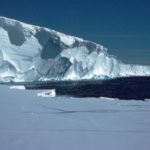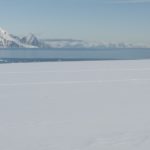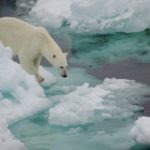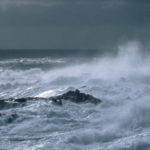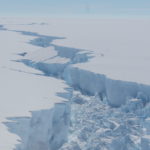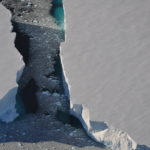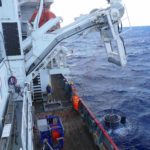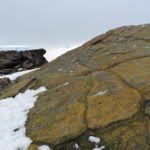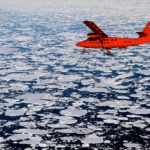The Antarctic is a pivotal part of the Earth’s climate system and a sensitive barometer of environmental change. Although remote and inhospitable, Antarctica is Earth’s most powerful natural laboratory. Understanding how the Antarctic is responding to current climate change – and what the continent was like in the past – is essential if scientists are to be able to more accurately predict future climate change and provide accurate information to politicians and policy makers.
British Antarctic Survey (BAS) has for the past 60 years been responsible for most of the UK’s scientific research in Antarctica and its current five-year research strategy is focussed on deepening our understanding of climate change.
Antarctic ice cores reveal the clearest link between levels of greenhouse gases in the atmosphere and the Earth’s temperature. They show that the temperature of the climate and the levels of greenhouse gases are intimately linked. In 2004, ice core scientists at BAS working together with colleagues from other European nations successfully extracted a three-kilometre ice core from the Antarctic. This core contains a record of the Earth’s climate stretching back 800,000 years – giving us by far the oldest continuous climate record yet obtained from ice cores.
BAS geologists can look back even further in time. By studying Antarctic rocks and sediments from the sea and lake beds, they are able to get a picture of what the Antarctic was like millions of years ago when the continent was warm and supported plants and animals such as dinosaurs. Understanding how the ice sheets that currently cover the continent developed and how they have receded in the past is essential if we are to be able to predict how those ice sheets will behave in a warmer world.
Much of BAS science is done on the Antarctic Peninsula – one of the fastest warming parts of the planet. BAS glaciologists are also studying the West Antarctic Ice Sheet, parts of which are thinning rapidly. Their work is crucial to understanding whether this thinning could signal the start of the ice sheet’s collapse, an event that would cause sea levels to rise much more than currently predicted.
On sea as well as on land, BAS scientists are investigating climate change. As the waters warm around Antarctica, ecologists at BAS are looking at how penguins, seals and the other species that make up one of the world’s largest marine ecosystems are responding.
Because the causes and effects of climate change are extraordinarily complex, assembling all the pieces of the climate change jigsaw is a huge challenge. By conducting world-class science in the Antarctic, BAS is making a significant contribution to meeting this challenge.
The cause of the variability in atmospheric CO2 over glacial-interglacial timescales has been a puzzle since its discovery in the early 1980s. It is widely believed to be related to …
Sea-ice is frequently cited as a likely driver and propagator of abrupt climate change because of the rapid and far-reaching impact of its feedbacks. However, numerical climate models are still …
During the Last Interglacial (129-116 thousand years ago, ka) CO2 and global temperature were both higher than they were before human industrialisation. By examining Last Interglacial climate, we thus gain …
The Antarctic Peninsula and West Antarctica have warmed dramatically in recent decades, with some climate records indicating that these are among the most rapidly warming regions on Earth. The Antarctic …
Changes in wind strength and circulation patterns above the Antarctic Peninsula are linked to its warming and increased upwelling of warm circumpolar deep water, resulting in accelerated melting and thinning …
In order to assess the impact of anthropogenic carbon dioxide (CO2) on the oceans today we are investigating the effect of decreasing upper ocean pH on calcifying zooplankton. Pteropods, …
This research focuses on investigating the glacial histories of Arctic ice sheets and ice caps using the marine geological record preserved on continental margins. By reconstructing past ice sheets, their …
In this NERC-funded project, we are generating Southern Hemisphere Westerlies (SHW) proxy records from each of the three major sectors of the Southern Ocean, focusing on subantarctic islands situated in …
The polar ice sheets play a major role in controlling Earth’s sea level and climate, but our understanding of their history and motion is poor. The biggest uncertainty in predicting …
This project will reconstruct millennial-scale ice sheet change in the western Amundsen Sea Embayment, Antarctica, using high-precision exposure dating.
Page 4 of 5«
1
2
3
4
5
»Last »
30 June, 2022
Introduction According to the IPCC Sixth Assessment Report, human activities have been the dominant driver of global climate change since the mid-20th century. Antarctica, and the Southern Ocean that surrounds …
30 June, 2022
Introduction It’s over 30 years since the discovery of the Antarctic ozone hole drew world attention to the impact of human activity on the global environment. Why is the ozone …
30 June, 2022
What’s new about sea-ice data? The maximum sea-ice extent happens around February in the Arctic. For the year 2022, the maximum extent was recorded at nearly 15 million square kilometres. …
30 June, 2022
What is Larsen C and why is it in the news?
30 June, 2022
Introduction Sea-level rise increases the frequency of coastal flooding events and threatens coastal populations around the world. Why is sea-level rise important? Around 148 million people are exposed to coastal …
30 June, 2022
Introduction Ice cores are cylinders of ice drilled out of an ice sheet or glacier. Most ice core records come from Antarctica and Greenland, and the longest ice cores extend …
30 June, 2022
Introduction The Antarctic Peninsula experienced unprecedented warming during the latter part of the 20th Century. This caused seven floating ice shelves to retreat dramatically with very little of their area …
Page 2 of 138«
1
2
3
4
…
138
»Last »
27 September, 2017
Latest satellite images reveal a new 100-square-mile iceberg emerging from Antarctica’s Pine Island Glacier. The calving event did not come as a complete surprise, but is a troubling sign with …
25 September, 2017
Arctic sea ice extent has likely reached its minimum extent for the year, at 4.64 million square kilometers (1.79 million square miles) on September 13, 2017, according to a team …
4 September, 2017
A new study of the marine invertebrates living in the seas around Antarctica reveals there will be more ‘losers’ than ‘winners’ over the next century as the Antarctic seafloor warms. …
18 July, 2017
Last week (12th July) Dr Emily Shuckburgh travelled to Pittsburgh, USA, and received the prestigious 2017 I. E. Block Community Lecture prize from SIAM – the Society for Industrial and …
12 July, 2017
After months of ‘hanging by a thread’ a vast iceberg the size of Norfolk has finally broken off Antarctica’s Larsen C Ice Shelf. Around 30 metres of this 190m thick …
5 July, 2017
Reporting this week (Wednesday 5 July) in the journal Nature, an international team of researchers led by British Antarctic Survey (BAS) explains that wind-driven incursions of warm water forced the …
3 July, 2017
A new £10 million research programme to investigate how the Arctic Ocean is changing kicked off last week (Friday 30 June) with its first research expedition to the Barents Sea. …
29 June, 2017
Ice-free areas in Antarctica could expand by close to 25 per cent by 2100 and drastically change the biodiversity of the continent, research published this week in Nature has shown. …
23 June, 2017
A series of unprecedented storms over the Southern Ocean likely caused the most dramatic decline in Antarctic sea ice seen to date, a new study finds. Antarctic sea ice – …
25 April, 2017
New research describes for the first time the role that warm, dry winds play in influencing the behaviour of Antarctic ice shelves. Presenting this week at a European conference scientists …
Page 11 of 16«
1
…
9
10
11
12
13
…
16
»Last »

